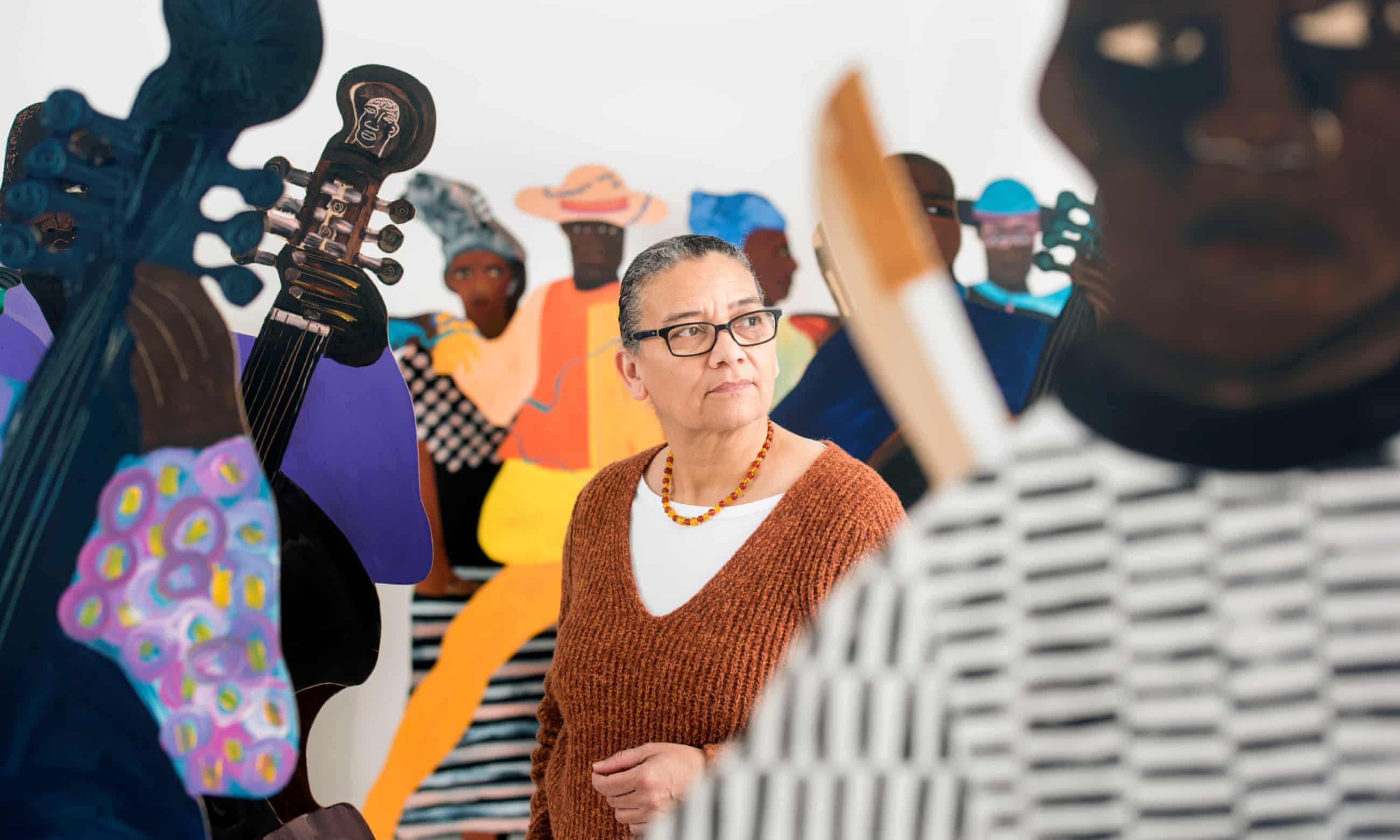President with a torpedo in his crotch: how the works of Lubaina Himid speak to Trump timesPosted in Africa, Articles, Arts, Media Archive, United Kingdom on 2017-01-19 00:07Z by Steven |
President with a torpedo in his crotch: how the works of Lubaina Himid speak to Trump times
The Guardian
2017-01-17
 Lubaina Himid among the cutouts of slaves that form her 2004 piece Naming the Money, at Spike Island contemporary art centre in Bristol. Photograph: Adrian Sherratt for the Guardian |
Born in Zanzibar and raised in Britain, Lubaina Himid makes work about everything from slavery to Thatcher to the cotton trade. Now in her 60s, she’s finally getting the recognition she deserves
Lubaina Himid was just four months old when her father died. It was 1954 and her Blackpool-born mother decided to leave their home in Zanzibar and head back to Britain, where she brought her daughter up as a Londoner. Himid would not return to the place of her birth for 43 years…
Read the entire article here.